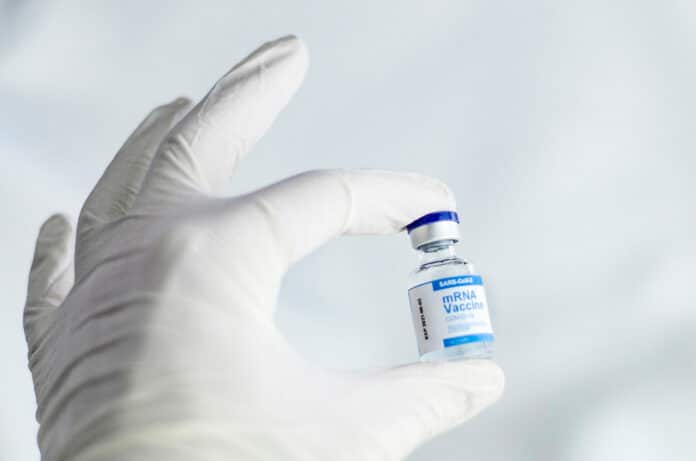Throughout the COVID-19 pandemic, the correlation between infection prevalence and severe consequences like hospitalization and mortality altered. Predictions of the frequency and timing of severe outcomes can benefit from accurate estimates of the infection-fatality ratio (IFR) and infection-hospitalization ratio (IHR), and the interval between infection and hospitalization or death. This will help healthcare services better prepare for times of peak demand.
On January 6, 2021, a countrywide lockdown was implemented to reduce social contact to stem the flood of illnesses dramatically. England started a widespread vaccination drive at the same time this lockdown started, and it has now reached high vaccination coverage levels.
A recent study examined the impact of the widespread vaccination program and the appearance of the Alpha, Delta, and Omicron variants between May 2020 and March 2022 on the severity of the SARS-CoV-2 virus’s impacts in England.
The infection fatality ratio (IFR) and infection hospitalization ratio (IHR) measures the proportion of deaths and hospitalizations, respectively, among infected individuals. When known accurately, short-term forecasts of severe outcomes can be made using current estimates of infection levels and the estimated time delay to severe outcomes.
The study used publicly available data for the daily number of deaths and hospitalizations, REACT-1 swab positivity data, time-delay models, and Bayesian P-spline models.
The REal-time Assessment of Community Transmission-1 (REACT-1) study estimated swab positivity for Severe Acute Respiratory Syndrome Coronavirus 2 (SARS-CoV-2) infection in England approximately monthly from May 2020 to March 2022. The REACT-1 study involved cross-sectional surveys over 19 rounds that aimed to test a random sample of the population of England for the presence of the SARS-CoV-2 virus.
The prevalence of SARS-CoV-2 infection in the community, as determined by swab-positive and severe outcomes, were correlated over time, according to the study. In the future, big community testing studies like REACT-1 may be utilized to foresee adverse effects in the short term, in addition to estimating prevalence.
The time gap between swab positivity and these catastrophic outcomes was longer for rounds 1 to 7 (May 2020 to December 2020), probably because REACT -1’s random, community-based sampling method was better able to detect asymptomatic and presymptomatic infections. Swab positivity lagged daily cases by around a week from rounds 8 to 13 of REACT-1. The time lag between REACT-1 swab positivity and severe outcomes was shorter and more consistent with earlier investigations based on symptom onset during rounds 14 to 19 (September 2021 to March 2022). This might indicate a change in the virus’s inherent biology.
The government significantly up its mass immunization campaign in January 2021. It is not surprising that a few weeks following this, the rate of deaths started to deviate from predominance because vaccinations have been demonstrated to be particularly effective in avoiding COVID-19-related mortality. Aged 65 and older adults experienced this “decoupling” earlier and more, most likely due to the immunization campaign’s initial focus on the elderly. Even while there was some “decoupling” in the hospitalization data, it was less pronounced and happened later.
By measuring the difference between smoothed estimates of swab positivity, and the timelag-adjusted signals for deaths, hospitalizations, and cases, scientists were able to estimate the IFR and IHR of the SARS-Cov-2 virus and the case ascertainment rate of England’s mass testing over time.
Scientists noted, “During 2020, we estimated the IFR to be 0.67% and the IHR to be 2.6%. By late 2021/early 2022, the IFR and IHR had
decreased to 0.097% and 0.76%, respectively. The average case ascertainment rate over the entire study duration was estimated to be 36.1%, but there was some significant variation in continuous estimates of the case ascertainment rate. Continuous estimates of the IFR and IHR of the virus were observed to increase during the periods of Alpha and Delta’s emergence.”
“During 2020, we estimated a time-lag of 19 days between hospitalization and swab positivity and 26 days between deaths and swab positivity. By late 2021/early 2022, these time lags had decreased to 7 days for hospitalizations and 18 days for deaths.”
“Even though many populations have high levels of immunity to SARS-CoV-2 from vaccination and natural infection, waning of immunity and variant emergence will continue to be an upward pressure on the IHR and IFR. As investments in community surveillance of SARS-CoV-2 infection are scaled back, alternative methods are required to accurately track the ever-changing relationship between infection, hospitalization, and death and provide vital information for healthcare provision and utilization.”
Journal Reference:
- Eales O, Haw D, Wang H, Atchison C, Ashby D, Cooke GS, et al. (2023) Dynamics of SARS-CoV-2 infection hospitalization and infection fatality ratios over 23 months in England. PLoS Biol 21(5): e3002118. DOI: 10.1371/journal.pbio.3002118
